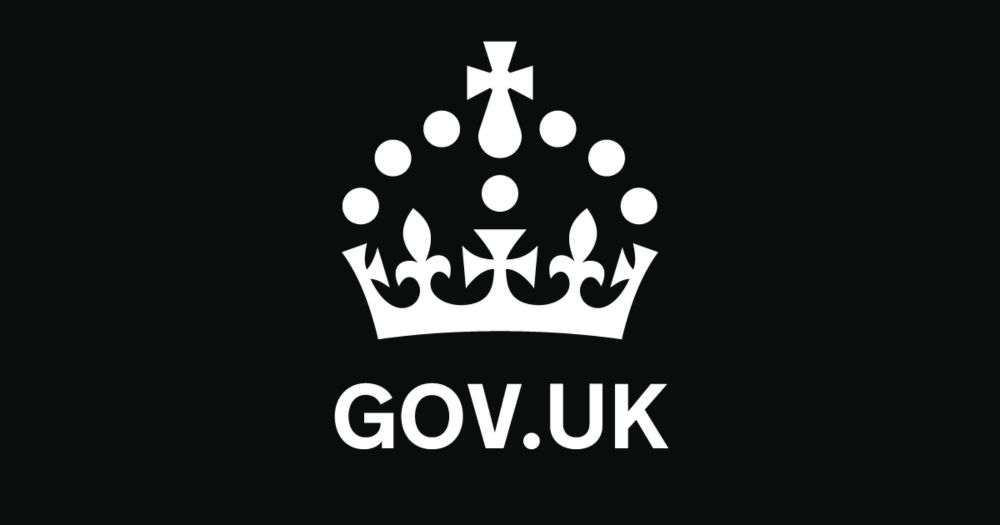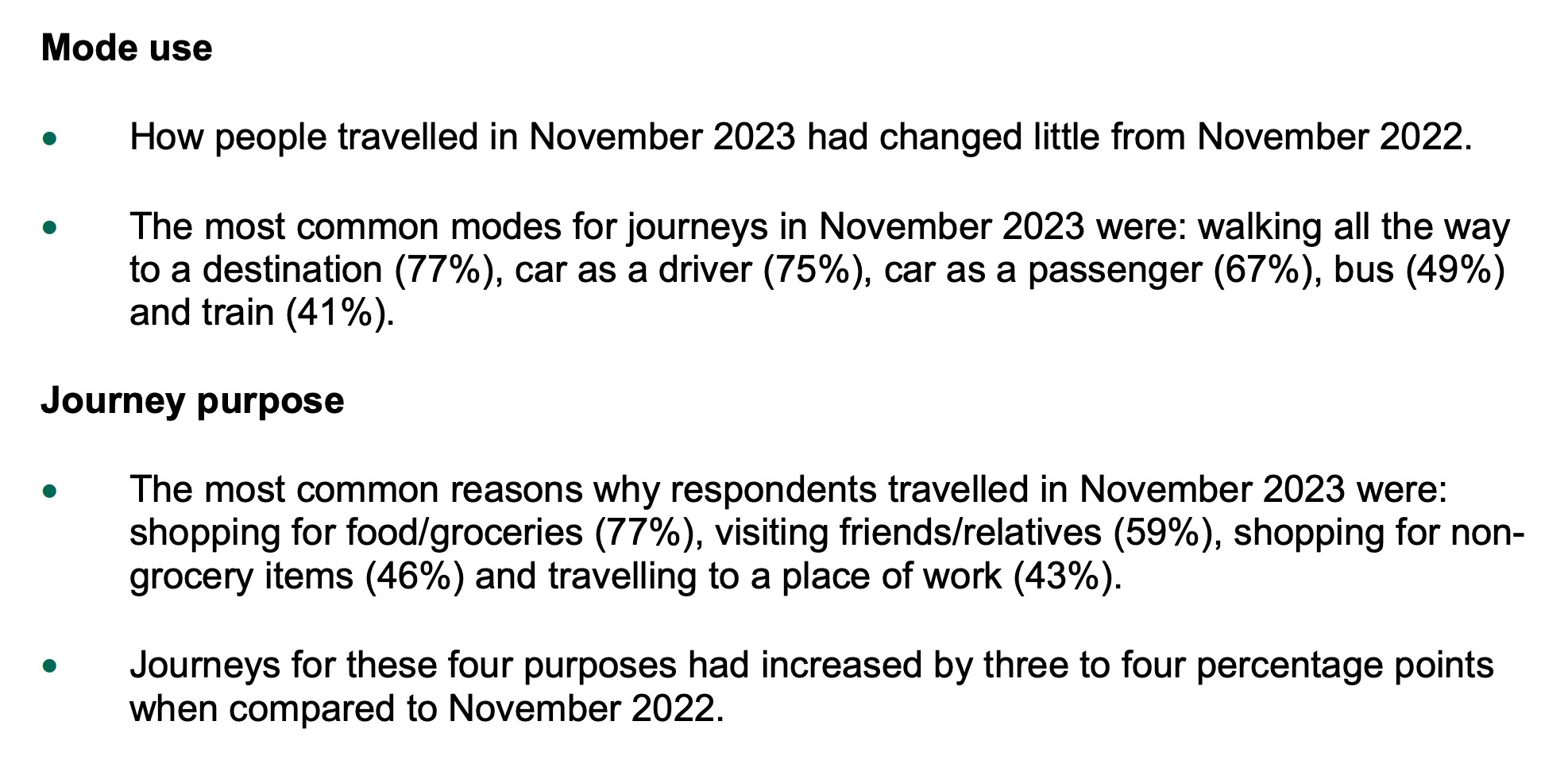
This one is interesting It is based on an online online survey of 3,732 people aged 16-75 from England in November 2023. This was then weighted to be representative of the population It follows a similar survey in 2022 so you can look at differences between the two. Raw data has also been released
Our changing travel 2023 A study of post-pandemic transport trends and changing travel behaviour. Covers: - the effects of the cost of living - the growth of the digital economy - lifestyle changes - views about sustainable travel

A study of post-pandemic transport trends and changing travel behaviour.
First off - walking is the most common way of getting around. A reminder that pretty much everyone benefits when you make streets work better for pedestrians. Secondly - commuting is pretty far down the list of most common reasons people travelled, well behind shopping and visiting friends.

